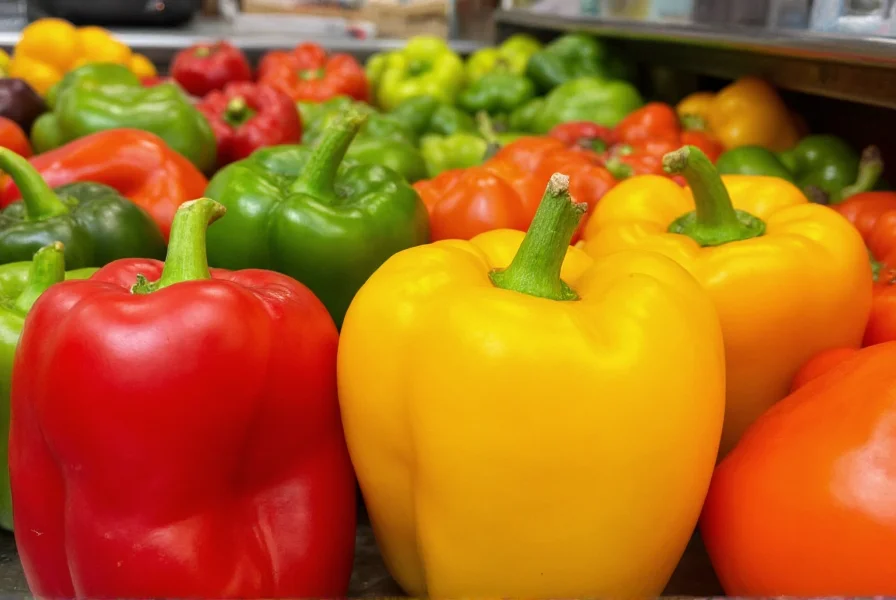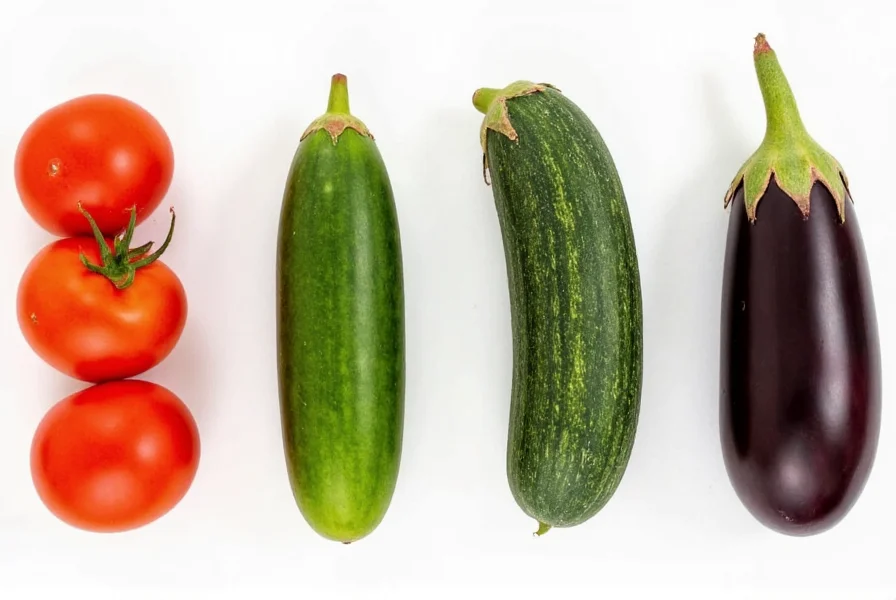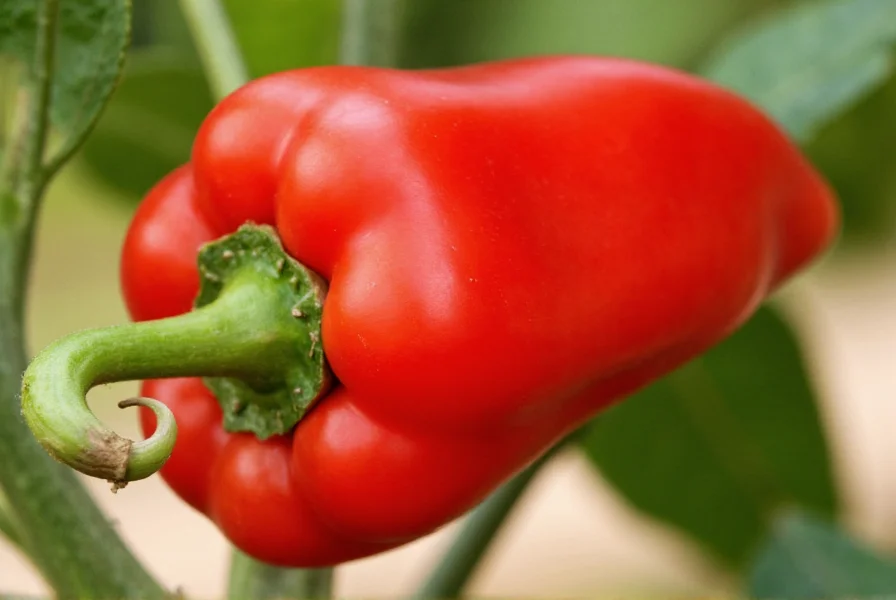Understanding the classification of peppers requires examining both scientific definitions and everyday culinary practices. This distinction creates one of the most persistent food classification debates in botany and cooking.
Botanical Definition of Fruits vs. Vegetables
In botanical terms, a fruit develops from the ovary of a flowering plant and contains seeds. By this definition, peppers unquestionably qualify as fruits. When a pepper plant flowers, the ovary swells and matures into what we recognize as peppers, with seeds enclosed inside.
Vegetables, from a botanical perspective, refer to other plant parts like roots (carrots), stems (celery), leaves (spinach), or flowers (broccoli). Peppers don't fit into any of these categories—they're seed-bearing structures that develop from flowers.
Why Peppers Are Culinary Vegetables
Despite their botanical classification, peppers function as vegetables in cooking for several practical reasons:
- They have low sugar content compared to typical fruits
- They're rarely used in desserts or sweet preparations
- They're commonly incorporated into savory dishes alongside traditional vegetables
- They lack the sweetness associated with most fruits
This culinary classification system developed long before modern botanical science and is based on taste and usage rather than plant biology. Chefs and home cooks categorize ingredients by how they're used in recipes, not by their reproductive structures.
| Classification Type | Pepper Status | Reasoning |
|---|---|---|
| Botanical | Fruit | Develops from flower and contains seeds |
| Culinary | Vegetable | Savory flavor profile and usage in dishes |
| Nutritional | Vegetable | Grouped with vegetables for dietary guidelines |
Historical Context of the Pepper Classification
The confusion around pepper classification mirrors the famous 1893 U.S. Supreme Court case Nix v. Hedden, which determined that tomatoes should be considered vegetables for tariff purposes, despite being botanically fruits. This legal distinction recognized the difference between scientific classification and common usage.
Peppers follow a similar pattern—they're scientifically fruits but treated as vegetables in everyday contexts. This dual identity isn't unique to peppers; cucumbers, eggplants, and squash share this botanical-culinary discrepancy.
Types of Peppers and Their Classification
All varieties of peppers—whether sweet bell peppers, spicy jalapeños, or extremely hot habaneros—share the same botanical classification. The Scoville scale measures their heat level, but doesn't affect their fundamental botanical identity.

Interestingly, as peppers ripen and change color from green to red, yellow, or orange, their nutritional profile changes significantly. Riper peppers contain more vitamins and antioxidants, but their botanical classification remains unchanged—they're still fruits at every stage of development.
Practical Implications of Pepper Classification
Understanding whether peppers are fruits or vegetables matters primarily in specific contexts:
- Gardening: Knowing peppers are fruits helps with crop rotation and companion planting
- Nutrition: Dietary guidelines group peppers with vegetables for meal planning
- Cooking: Their vegetable-like behavior influences recipe development
- Botany: Correct classification aids scientific communication
For most home cooks and consumers, the distinction has little practical impact on how they select, prepare, or enjoy peppers. The important consideration remains their flavor, nutritional value, and culinary versatility.
Other Foods with Similar Classification Confusion
Peppers aren't alone in this botanical-culinary identity crisis. Several common foods share this dual classification:
- Tomatoes: Botanically fruits, culinarily vegetables
- Cucumbers: Botanically fruits, culinarily vegetables
- Zucchini: Botanically fruits, culinarily vegetables
- Eggplants: Botanically fruits, culinarily vegetables
- Okra: Botanically fruits, culinarily vegetables

This pattern reveals an important principle: culinary classification focuses on taste and usage, while botanical classification follows plant development and structure. Neither system is "wrong"—they simply serve different purposes.
Conclusion
The question of whether peppers are fruits or vegetables ultimately depends on the context. Scientifically, peppers are unquestionably fruits. In the kitchen, at the grocery store, and in nutritional guidelines, they function as vegetables. This dual identity reflects the different ways humans categorize the natural world for various practical purposes.
Understanding this distinction helps bridge the gap between scientific accuracy and everyday usage, allowing us to appreciate peppers for what they are biologically while continuing to enjoy them as the versatile culinary ingredients they've become.
Frequently Asked Questions
Are all types of peppers considered fruits botanically?
Yes, all pepper varieties including bell peppers, chili peppers, jalapeños, habaneros, and cayenne peppers are botanically classified as fruits because they develop from the flower of the plant and contain seeds.
Why do we call peppers vegetables if they're technically fruits?
Peppers are called vegetables in culinary contexts because of their savory flavor profile, low sugar content, and common usage in savory dishes rather than sweet preparations. This culinary classification developed based on taste and usage rather than botanical accuracy.
Does the color of a pepper affect whether it's a fruit or vegetable?
No, the color of a pepper doesn't change its botanical classification. Whether green, red, yellow, orange, or purple, all pepper colors are botanically fruits. The color change simply indicates ripeness and affects nutritional content, not classification.
How does the fruit classification of peppers affect cooking?
The botanical fruit classification has minimal impact on cooking. Chefs treat peppers as vegetables due to their savory flavor profile. However, understanding that peppers are fruits explains why they pair well with both vegetables and some fruits in dishes like salsas and salads.
Are there any nutritional differences between peppers classified as fruits versus vegetables?
No, the classification doesn't affect nutritional value. Peppers are nutrient-dense regardless of classification. Riper (red, yellow, orange) peppers contain more vitamins and antioxidants than green peppers, but this relates to ripeness, not fruit versus vegetable status.











 浙公网安备
33010002000092号
浙公网安备
33010002000092号 浙B2-20120091-4
浙B2-20120091-4